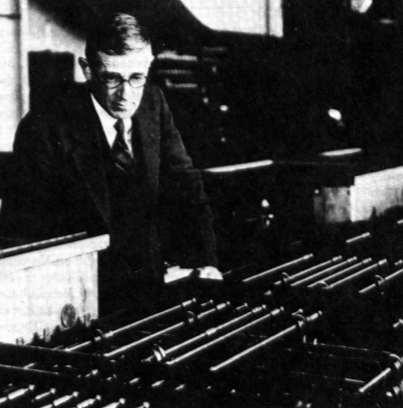| Vannevar Bush - The Man Who Didn't Invent The Computer |
| Written by Historian | |||||||
Page 3 of 3
Bush’s Rapid Arithmetic Machine remained forgotten until a patent war broke out between Univac and Honeywell over the ENIAC when it was rediscovered. Bush, surprisingly played down his contribution to computing and this machine wasn’t mentioned in the final court report. After the war Bush did not return to the development of computing and MIT lost its lead in the new subject. But the Rapid Arithmetic Machine wasn’t Bush’s only contribution to the subject. In 1945 he published an article describing the Memex, a machine that stored and retrieved information using microfilm. What was clever about this is that it used what we would call a hyperlink to form information trails. By linking related pieces of information together the researcher could create new ways of looking at it and could retrieve it, work with it and add to it. The Memex wasn’t just a vague idea. Bush, ever the inventor, had a very clear idea how it could be built. The only problems he had were making it work fast enough, and of course, the inevitable difficulties inherent in using photography as a storage medium.
A sketch of the proposed Memex machine
He even tried to build a machine that was to be a step towards the Memex. It was called the Rapid Selector Machine (Bush seems to have liked the word “Rapid”) and it searched through microfilm looking for pages with a relevant index code. It was thought that the machine was never completed - another abandoned Bush computing device - but many years after it was revealed that it was in fact classified. The Rapid Selector Machine was used in a highly secret project in one of the code breaking agencies. Multi-TalentedPerhaps the involvement of the secret agencies is a clue as to why we know so little about the Rapid Arithmetic Machine - but I doubt it. There would be no reason to keep such an early computing machine secret for so long. It is much more likely that Bush just moved on to be interested in other things. He certainly did design a code breaking machine for the Navy which was used in deciphering Japanese codes, but nothing more is known about it. It could have been based on the Rapid Arithmetic Machine but equally it could have been entirely electromechanical. In 1955 Bush retired and moved back to his old home in Cambridge, Massachusetts. He said it wasn’t fair to stay around and make life difficult for his successor! The American public remember Bush more for being involved in the atomic bomb project than for being a computer pioneer. His 1945 report to the President on a program for postwar science, Science: The Endless Frontier is still in print and remains influential in U.S. science policy. I think that he himself valued his work on engineering topics much more. He perfected a heat engine, worked on boats with hydrofoils, improved steam engines, gyroscopes, novel methods of painting pictures and many, many other things. Over the years he amassed a large number of patents and was on the board of many famous companies, including defence contractor Raytheon which he had founded in 1922 with a focus on refrigeration technology. From our perspective it is certain that what survives is his work on computers and yet this is a man who claimed to have had nothing at all to do with the subject!
Related ArticlesKonrad Zuse And The First Working Computer DARPA Wants Analog To Boost Super Computer Performance
To be informed about new articles on I Programmer, sign up for our weekly newsletter, subscribe to the RSS feed and follow us on Twitter, Facebook or Linkedin.
Comments
or email your comment to: comments@i-programmer.info
<ASIN:1597404918> <ASIN:0844740152>  |
|||||||
| Last Updated ( Thursday, 08 August 2024 ) |



